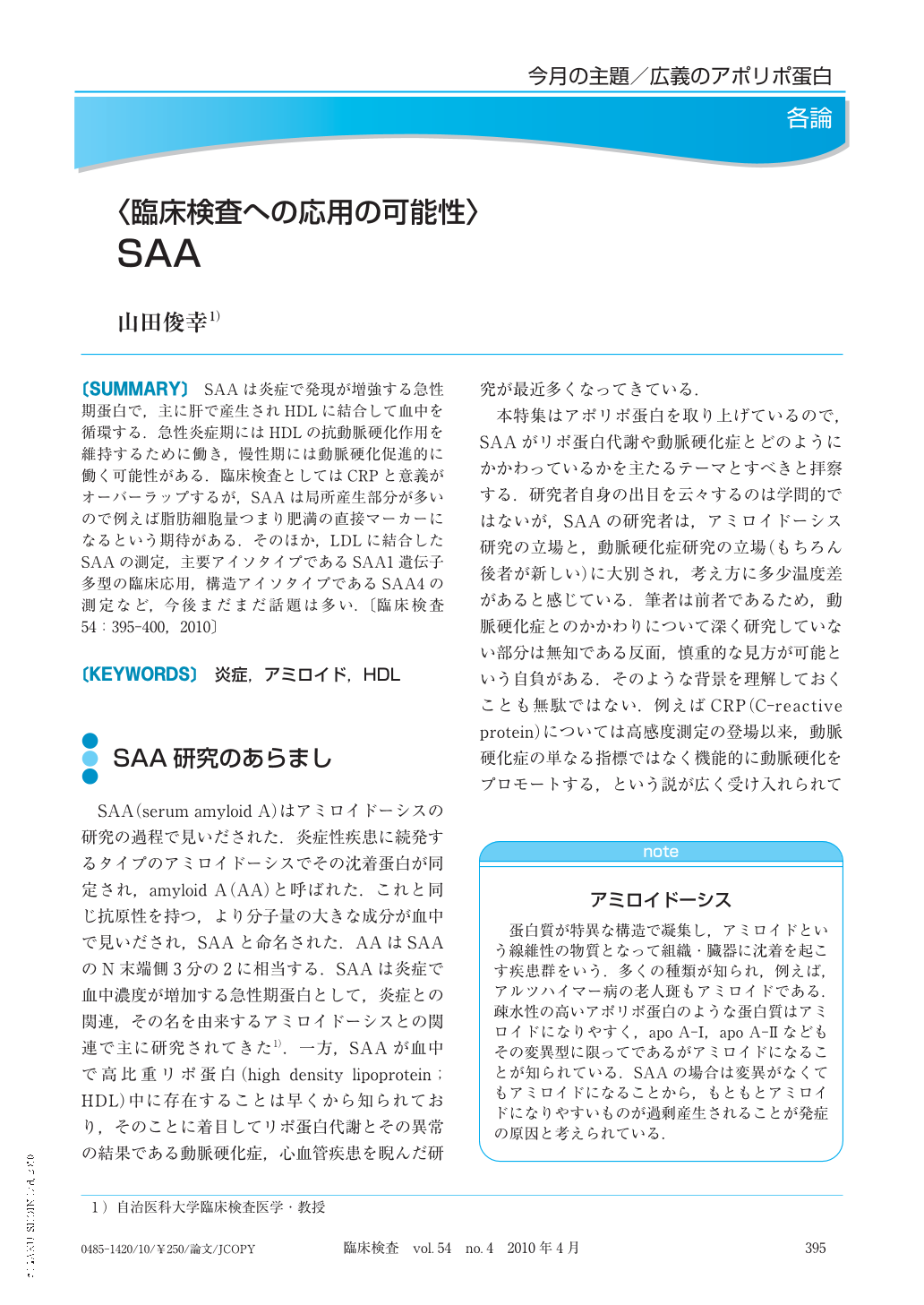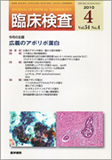Japanese
English
- 有料閲覧
- Abstract 文献概要
- 1ページ目 Look Inside
- 参考文献 Reference
SAAは炎症で発現が増強する急性期蛋白で,主に肝で産生されHDLに結合して血中を循環する.急性炎症期にはHDLの抗動脈硬化作用を維持するために働き,慢性期には動脈硬化促進的に働く可能性がある.臨床検査としてはCRPと意義がオーバーラップするが,SAAは局所産生部分が多いので例えば脂肪細胞量つまり肥満の直接マーカーになるという期待がある.そのほか,LDLに結合したSAAの測定,主要アイソタイプであるSAA1遺伝子多型の臨床応用,構造アイソタイプであるSAA4の測定など,今後まだまだ話題は多い.
Serum amyloid A(SAA), a sensitive acute phase reactant, is an apolipoprotein associated largely with HDL. Although exact mechanisms are unknown, SAA may maintain the homeostatic function of HDL in the acute inflammation and may promote atherogenesis by its mild elevation during a long span. SAA, when attached with LDL, may give the particle atherogenic features. LDL-SAA is thus expected to be a new risk marker in atherotenesis. Since fat tissues directly produce SAA, obesity may raise serum SAA level. Therefore, SAA may be an indicator for controlling metabolic syndrome.

Copyright © 2010, Igaku-Shoin Ltd. All rights reserved.


